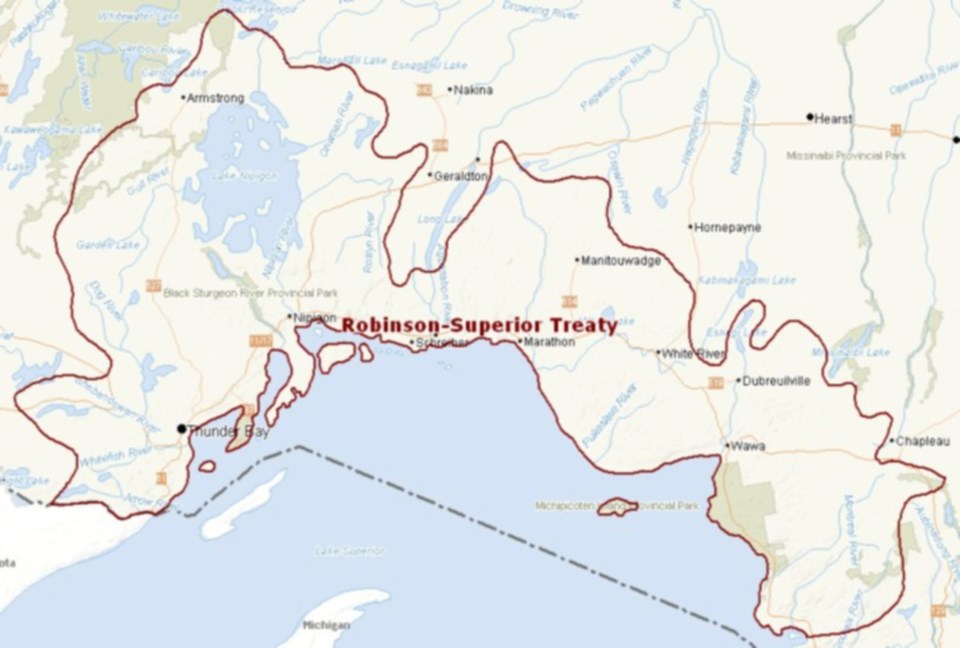An economics professor from the University of Toronto is testifying this week on behalf of Ontario in the Robinson Superior Treaty annuities trial — the latest chapter in a lengthy and complex court process that will eventually determine compensation for the Anishinabek of Lake Superior, who have gone nearly 150 years without an increase in annual treaty payments, also known as annuities, for ceding much of their land base to the Crown in 1850.
Michael Smart — a specialist in the economic analysis of tax policy — has co-authored reports with fellow economics expert Robin Boadway for the province as part of the trial process in an effort to attach monetary value to net Crown resource-based revenue (NCRR), which includes revenues from mining, forestry, transportation, hydroelectric and land use sales in Robinson Superior Treaty territory.
The province's expert witness says information shared during the court proceeding, known as stage three of the annuities trial, has prompted him to go back and crunch numbers from Ontario's public accounts records — a move that has resulted in a change of present-day value of NCRRs in the treaty territory since 1850.
Originally, the pair of economists concluded the present-day value of NCRRs in Robinson Superior Treaty (RST) territory was negative $7.9 million in unadjusted resources revenues and negative $19.4 million in "risk-adjusted present day value" due to historical expenses incurred by Ontario through colonization and resource extraction efforts, in addition to losses sustained from declines in the forestry industry.
As a result of the previous calculations, the amount in annuities hypothetically payable to the Anishinabek in RST territory was nearly $35 million.
New information from Smart, however, now lists the present day, unadjusted value of NCRRs as negative $4.6 million; the risk-adjusted present day value of NCRRs, meanwhile, jumped to a gain of $169 million as of 2020 — all of which reflects nearly $85 million in annuities hypothetically payable to the RST Anishinabek.
Either way, the calculations performed by Boadway and Smart for the annuities trial are worlds away from those of economics expert David Hutchings, who has been called upon by the plaintiffs, Whitesand and Red Rock First Nations, to determine the value of NCRRs in RST territory.
Hutchings has estimated the present day-value of NCRRs at $56.9 billion.
Another economics expert called upon by the plaintiffs, Joseph Stiglitz, has previously testified in Ontario Superior Court that beneficiaries of both the Robinson Huron Treaty and Robinson Superior Treaty — a pair of identical treaties signed in 1850 — could be owed more $100 billion in unpaid treaty annuities.
A separate dispute involving Robinson Huron Treaty (RHT) annuities was being heard simultaneously by Ontario Superior Court Justice Justice Patricia Hennessy; the RHT proceedings have been adjourned since January while representatives for Ontario, Canada and RHT beneficiaries engage in confidential settlement talks.
The legal proceedings are so complex they’ve been broken up into three stages. Hennessy ruled in the previous two stages of the trial that the federal and Ontario governments had to pay both RHT and RST plaintiffs an increased annuity due to an augmentation clause allowing for increases to treaty payments "from time to time" as wealth generated on the land grew. But the annuity increase, Hennessy ruled, has to reflect a “fair share,” so long as there were enough resource-based revenues to do so without incurring a loss.
While Canada is not appealing those previous decisions, Ontario has decided to appeal to the Supreme Court of Canada after the Ontario Court of Appeal upheld Justice Hennessy’s decision.
The hearing for Ontario’s Supreme Court appeal is slated for the fall of 2023, with a decision expected to be handed down as early as the spring of next year.
The third stage of the RST annuities trial, which is currently being heard in a makeshift courtoom at the University of Sudbury, will determine how much money is owed to treaty beneficiaries and which of the Crowns — Canada or Ontario — will be responsible for paying the increased annuities.



